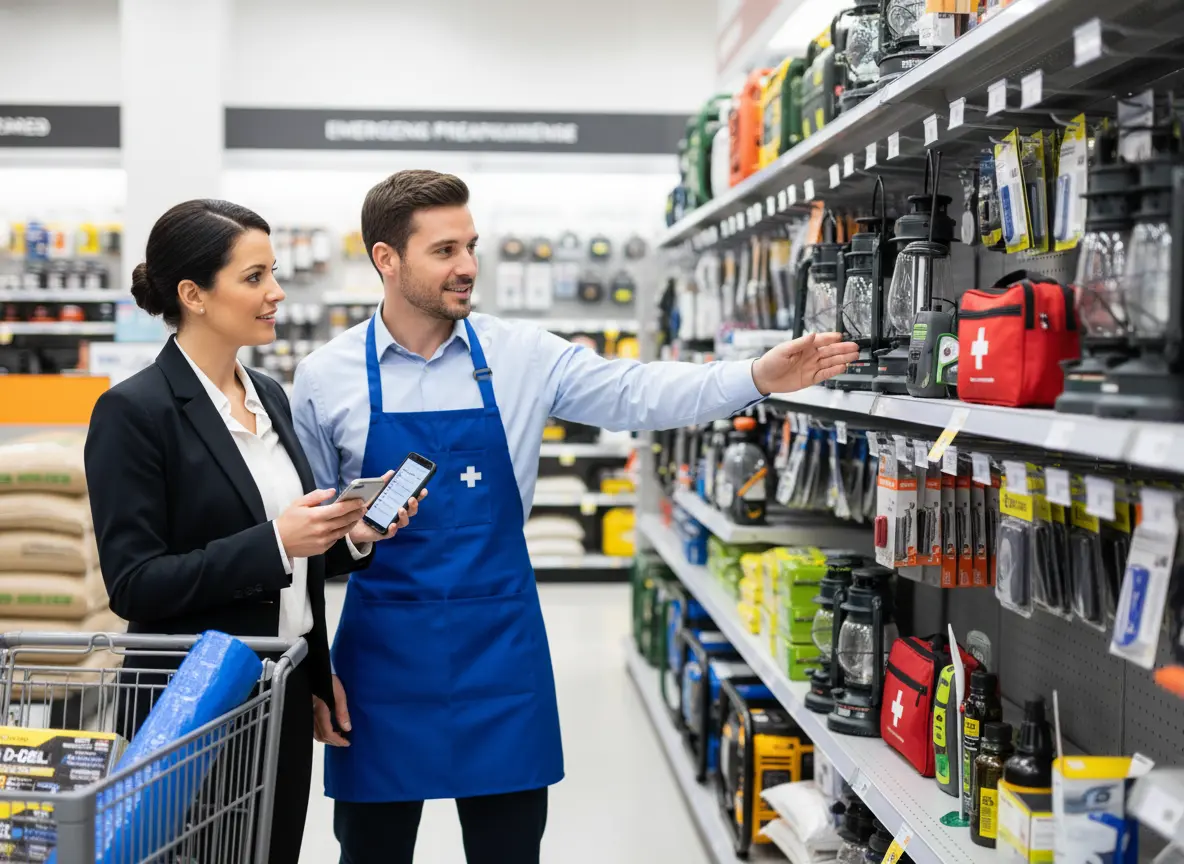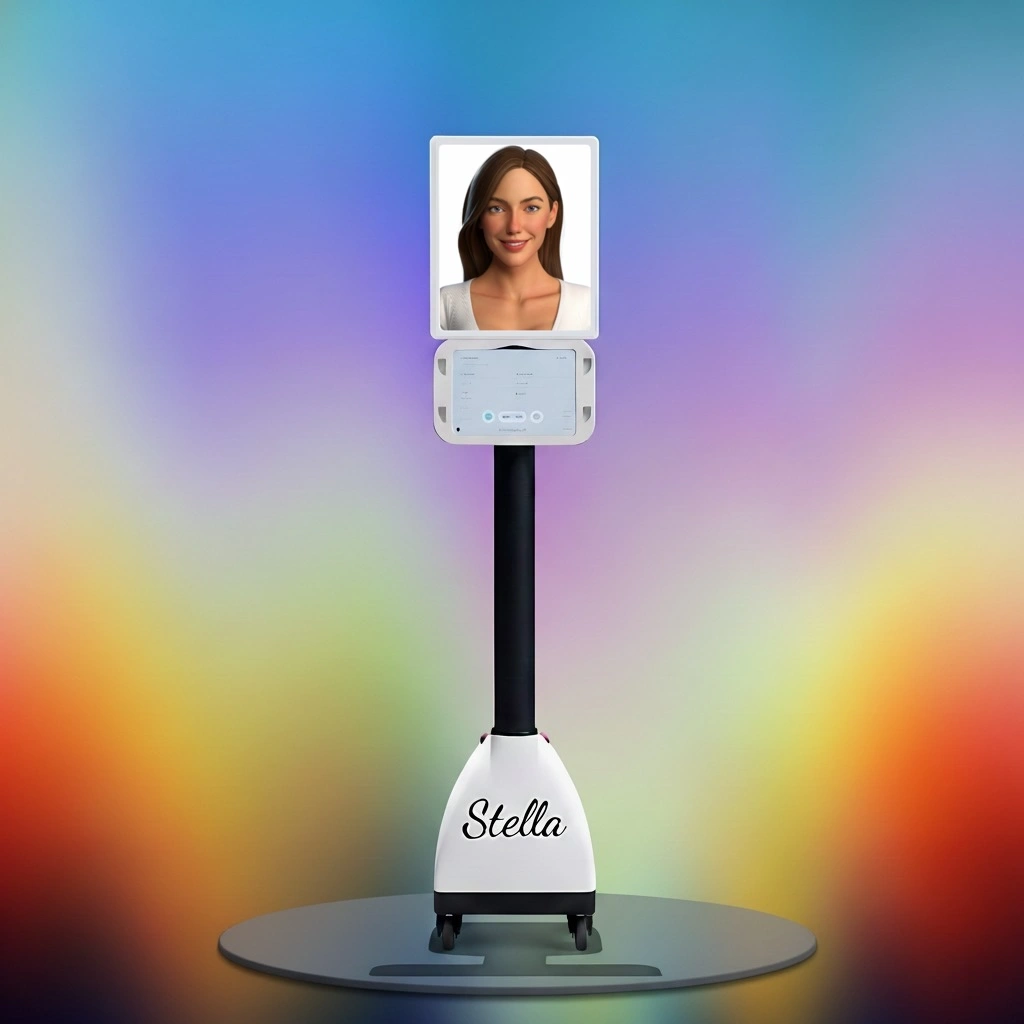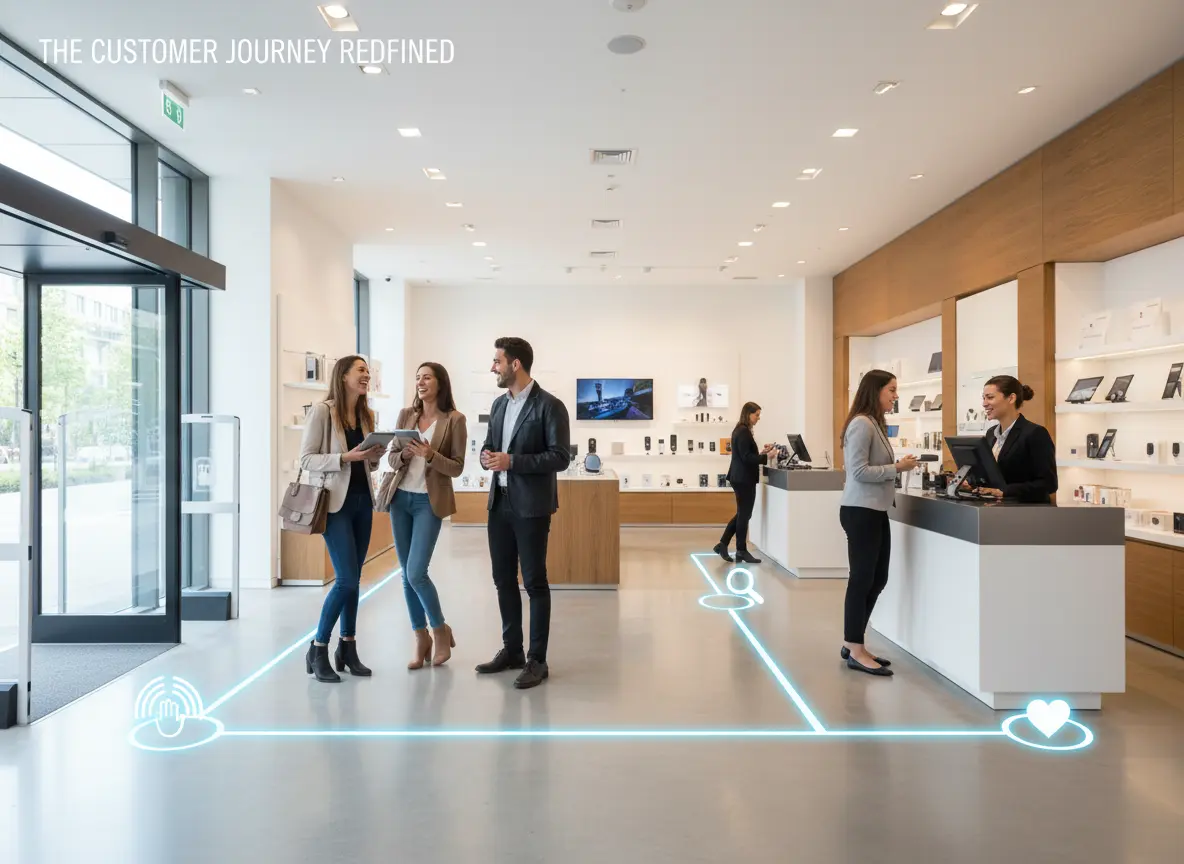Introduction: The Calm Before the Inevitable Storm
You know the scene. The weather forecast shifts from “a chance of sprinkles” to “Impending Doom-Nado 2024,” and suddenly your quiet hardware store transforms into the last chopper out of Saigon. Customers, wide-eyed with a primal fear of uncharged phones, are grabbing anything not bolted down. Your staff is running a frantic marathon between the battery aisle and the sandbags, answering the same three questions on a loop. It’s chaotic, it’s stressful, and let’s be honest, it’s also a massive sales opportunity.
But what if you could trade that chaos for controlled, profitable energy? What if, instead of just reacting to the panic, you could orchestrate the entire response like a seasoned conductor? It’s not about having a crystal ball; it’s about smart, proactive preparation. This guide is your blueprint for turning seasonal emergencies from a frantic scramble into your store’s time to shine. Let’s batten down the hatches and get to it.
Taming the Inventory Beast Before the Beast Arrives
When the storm clouds gather, your inventory is your arsenal. Being caught without the right supplies is like showing up to a flood with a pool noodle. The key is to think beyond the obvious and stock your shelves with strategic purpose, long before the first weather alert hits the airwaves.
The 'Obvious' and the 'Not-So-Obvious' Must-Haves
Of course, you need the classics. If you don’t have a mountain of batteries, flashlights, and duct tape, are you even a hardware store? But a truly prepared store goes deeper. Your customers will be thinking about the immediate crisis, but you should be thinking about the aftermath. They want a generator; you know they’ll also need the right extension cords, fuel stabilizers, and carbon monoxide detectors (a non-negotiable upsell for safety).
Here’s a quick-and-dirty checklist to get you started:
- Power & Light: Generators, fuel cans, batteries (all sizes, especially D and C), flashlights, headlamps, lanterns, and portable power banks for charging devices.
- Water & Weatherproofing: Sandbags, water pumps, tarps, plastic sheeting, weather stripping, caulk, and plywood.
- Safety & Tools: First-aid kits, work gloves, multi-tools, hand-crank radios, and of course, those life-saving carbon monoxide detectors.
- The Aftermath Crew: Chainsaws (and the oil and extra chains to go with them), wet/dry vacs, dehumidifiers, and heavy-duty trash bags.
Think about what problems arise after the storm passes. That’s where you can become a true local hero and a very profitable one at that.
Forecasting: Less Crystal Ball, More Cold, Hard Data
Guessing how many bags of rock salt you’ll need for the winter is a fool’s errand. Stop guessing and start analyzing. Your own POS system is a goldmine of information. Look at sales data from last year’s hurricane season or the "Snowpocalypse" of '22. What sold out first? What did you have way too much of? This historical data is your most reliable predictor of future needs.
Combine that internal data with external sources. Keep an eye on long-range forecasts from reliable sources like NOAA. If they’re predicting a wetter-than-average hurricane season or a brutal winter, adjust your ordering accordingly and—this is the important part—order early. The last thing you want is to be begging your supplier for generators when every other store in a 500-mile radius is doing the same thing. Beat the rush, secure your inventory, and you can spend your time managing your store, not your supply chain.
Strategic Merchandising: The Glorious ‘Panic Aisle’
When customers are in a panic, they don’t want to go on a scavenger hunt. They want a simple, one-stop solution. This is where you create a dedicated "Emergency Preparedness Center" at the front of your store. Make it impossible to miss. This isn't the time for subtle merchandising; it's time for a big, bold display that screams, “All your survival gear is right here!”
Stock this area with all the essentials from your list. Better yet, create grab-and-go kits. A "Blackout Bundle" could include a flashlight, batteries, a power bank, and a deck of cards. A "Storm-Proof Your Home" kit could have weather stripping, a caulk gun, and a roll of plastic sheeting. These bundles not only increase the average transaction value but also provide a genuine service to a stressed-out customer who doesn’t know where to begin.
Your Secret Weapon: The Calm in the Storm
Managing inventory is one thing; managing the flood of frantic people is another. When every customer has the same urgent question and your three staff members are being pulled in ten different directions, the customer experience plummets. This is where a little bit of automation can be a lifesaver.
Guiding the Frantic Masses with a Smile (Even a Digital One)
Imagine this: a customer rushes in, dripping rain and anxiety. Instead of looking around desperately for a free employee, they're immediately greeted by a calm, helpful presence. This is where Stella, your in-store robot assistant, becomes your MVP. She can be programmed with all the crucial emergency information. When a customer asks, “Where are the generators?” Stella can instantly direct them, "Our Emergency Preparedness Center is at the front of Aisle 1. We have generators, batteries, and safety kits all in one place for you!"
This simple interaction does two things: it provides immediate help to the customer and, more importantly, it frees up your human staff to handle the complex, high-value questions, like demonstrating how to safely operate that new generator or helping someone find the right parts to board up their windows. Stella handles the repetitive, high-volume questions, while your team provides the expert human touch.
Prepping Your People and Your Place
Having the right products is only half the battle. If your team isn’t prepared and your own store isn’t secure, you’re building your house on a foundation of sand—or, more accurately, a foundation about to be washed away.
Staff Training: Beyond ‘It’s in Aisle 5’
Your staff needs to be more than just walking store maps; they need to be emergency consultants. When a customer is buying their first-ever generator, they’re not just buying a product; they’re buying peace of mind. Your team should be trained to provide that. Hold pre-season briefings on:
- Product Knowledge: Not just what an item is, but how it works safely. How many watts does this generator produce? What kind of fuel does it take? Why is a CO detector essential?
- Customer Empathy: Acknowledge that customers are stressed. A little patience and understanding can go a long way in de-escalating a tense situation.
- Store Procedures: Who is responsible for what during a rush? What’s the protocol for a power outage in the store itself? Clarity prevents chaos.
An empowered, knowledgeable team is your greatest asset. They build trust, ensure customer safety, and turn a one-time panic-buyer into a lifelong loyal customer.
Communication is King (and Queen, and the Whole Royal Court)
Don't wait for the storm to hit to start talking to your customers. Position your store as a community resource before they need you. Use your email list and social media channels to share genuinely helpful content. Think "5 Steps to Winterize Your Pipes" or "Your Hurricane Prep Checklist."
When an event is imminent, use those same channels for real-time updates. "Fresh delivery of D batteries has arrived!" or "We will be open until 8 PM for last-minute supplies." This proactive communication reduces the number of phone calls and establishes your store as the reliable, go-to source for emergency needs.
Putting Your Own Oxygen Mask on First
It’s a bit ironic, isn’t it? Selling preparedness gear while your own store is unprepared. Make sure you have a business continuity plan. What happens if you lose power? Do you have a backup generator for your own POS systems and lights? What is your communication plan for your employees? Do you have a procedure for securing the building itself—protecting windows, signage, and outdoor inventory?
You can’t effectively serve your community if you’re dealing with your own disaster. A little internal prep ensures you can stay open, stay safe, and keep serving the customers who are counting on you.
A Quick Reminder About Stella
While you're busy managing inventory and training staff, Stella can be your store's tireless front-line ambassador. She greets every customer, promotes your "Emergency Prep" section, and answers common questions, ensuring no one feels ignored during the busiest rushes. It's like having an extra, always-on, perfectly professional team member dedicated to improving the customer experience and driving sales.
Conclusion: Ride the Wave, Don't Get Swamped
Seasonal emergencies are a certainty in the hardware business. The only variable is how you choose to face them. You can either get swept up in the reactive chaos or you can build a sturdy, proactive plan that turns panic into profit and stress into success.
By thoughtfully managing your inventory, strategically merchandising your store, and empowering your team (both human and robotic), you can transform your hardware store from a simple retailer into an essential community hub. So take a deep breath, look at the long-range forecast, and start planning. Because the next storm is always just over the horizon, and this time, you’re going to be ready for it.





















